By Jeff W. Zimba
Ammo prices have increased several-fold over the last few years. Ammo that used to run under $100/M can push $250 – $300 for the same quantity now. Some calibers have run as high as $800/M in the peak of the market as evidenced at many shoots and shows. Prices slowly seem to be settling back in, and inventories are finally catching up a little, but even the previously inexpensive and plentiful 7.62x39mm ammo can place a pain in the wallet that used to be reserved for actual gun purchases.
With the price of ammo increasing at the same time expendable income has been on a steady decline, it leaves shooters with an unfamiliar quandary. Simply “shooting less” is an uncomfortable position for many, but paying the mortgage and putting food on the table has to remain at the top of the priority list. So what’s a machine-gunner on a tight budget to do? Well, shooting smaller, not shooting less may be the way to go.
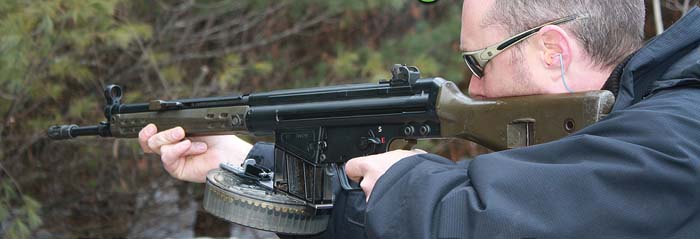
Downsize the Caliber, Not the Quantity
Some companies have specialized in .22 LR sub-caliber conversions for popular military firearms for years. There are few people who have not had some experience with the extremely popular rimfire conversions sold by Jonathan Arthur Ciener for decades. His offerings were really the only game in town for a number of years. Given the increase in .22 LR conversions and dedicated units on the market today, we think Jonathan was way ahead of the curve with his trademark AR-15/M16 kits, Mini-14 and AC-556 kits and now his latest Thompson SMG kit. His offerings also include a number of popular pistols.
In the last several years we have seen a major increase in rimfire conversions and even several dedicated .22 LR platforms in military rifle styles. Some of those in the market today include Advantage Arms, Inc., CMMG, Colt, GSG, Kuehl Precision Firearms, Lakeside Arms, Spikes Tactical, Smith & Wesson, Sturm Ruger, and many more.
For many years the benchmark for a reasonably priced, dedicated rimfire rifle was the well-known and reliable Ruger 10/22. Along with its wild popularity came numerous accessories. Some were radical aesthetic-only kits bringing this once tame looking carbine to amazingly different configurations. Many we have tested and brought to the pages of Small Arms Review. Some 10/22 upgrades included the “Krinker Plinker,” the MG-42 Kit, Christie & Christie “Super Stock” the twin receiver “Rhino Blaster” and even the short-lived “Akins Accelerator.”
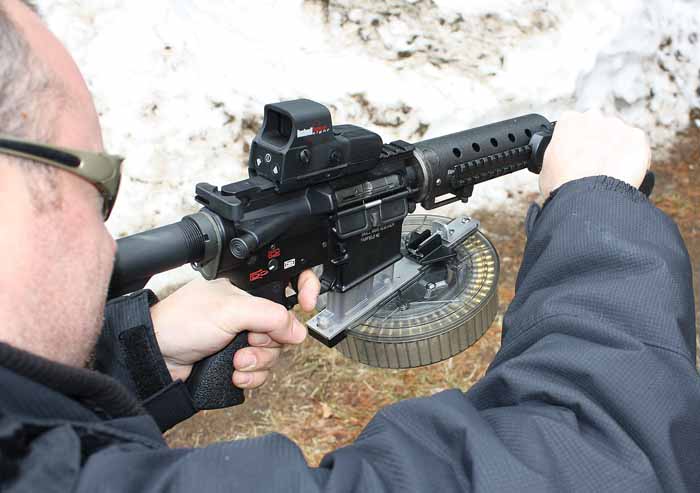
Capacity, Capacity, Capacity
With the exception of the belt-fed Tippmann .22 LR 1/2 scale machine guns, there were very few hosts that boasted a high enough and readily reliable magazine capacity for most serious high-volume shooters. Eric Graetz at Lakeside Guns stepped to the plate and designed the belt-fed Vindicator Carbine, based on the Tippmann action, and later introduced a radical new belt-fed .22 LR upper receiver for the black rifle family of firearms. Marketed as the LM-7, it remained on the market for a few years and was later replaced with the semiautomatic-only version, the “Razorback” that is still available today.
A real “show-stopper” in the select-fire, rimfire category has always been the American-180. With its massive capacity (165-round to 275-round) and extremely fast cyclic rate (usually well in excess of its reported 1,200rpm) it is a sexy and fun gun to shoot.
For all others, the normal magazine capacity hovered around 30 rounds. The 10/22 would accept a 50-round teardrop magazine by Mitchell Arms and later marketed as the MGI 50-round magazine.
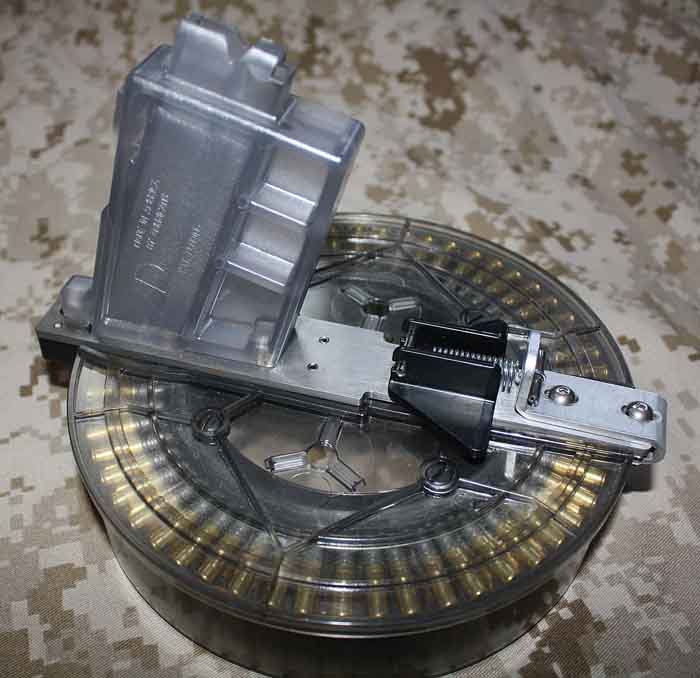
Bigger is Still Better
A few new .22 LR high-capacity magazines and adapters have been brought to our attention recently and we are pleased to pass along some of our findings. We have spent some quality range time with these and everyone who had the opportunity to try these all left with the same favorable impression.
The Bazooka Brothers A&D Drum Adapter
The first new unit we tested is the A&D Drum Adapter from Bazooka Brothers. This ingenious little adapter currently allows the use of American-180 drum magazines in AR-15/M16s and in the HK-91/G3. Each use their standard, unmodified mag-well but obviously require the use of a previously mentioned .22 LR sub-caliber unit.
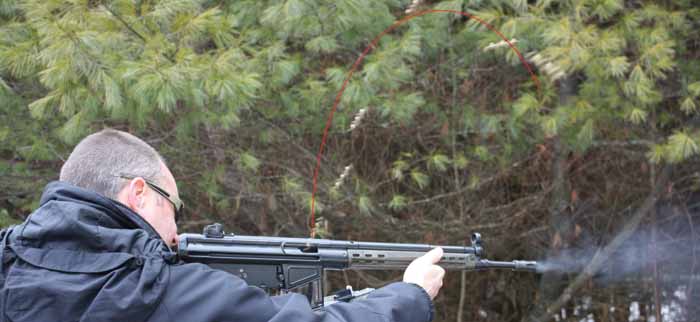
The units we tested this with were an M16 outfitted with a vintage Ciener/Atchisson .22 LR kit, and an original Portuguese G3 with a German “Einsteckgerat 5.6mmx16 zum Gewehr G3” .22 LR sub-caliber kit.
The drum adapter works by simulating the feed mechanism of the original American-180, except upside-down. The magazine lays flat on top of the American-180 receiver and feeds DOWN, directly into the chamber. It feeds the ammo UP into the mag-well of the new host. Since there is a spring winder used for the drum to function it doesn’t need to rely only on gravity for feeding. To feed the M16 and the G3, the ammo must pass through this new magazine adapter and feed in the same manor as a traditional .22 LR magazine. This creates a 4.25-inch “feed chute” between the magazine and the feed ramp. To take up the extra space and fill the new mag-well, 20 “dummy rounds” are first inserted into the magazine prior to loading. This way when the ammo is gone and the tension is running low, the dummy rounds come to rest in the magazine adapter to simulate an extended, flexible follower. There are several helpful tips to enhance your drums to overcome the reversed feeding style on the Bazooka Brothers website, however we didn’t find it necessary to make any changes to the drums we tested.
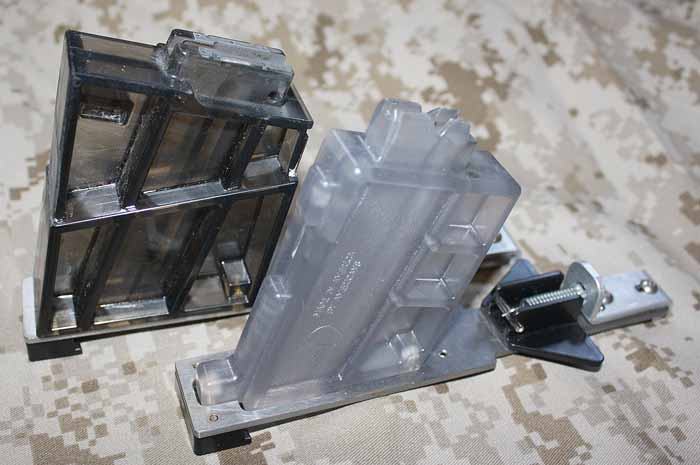
The Black Dog Machine .22 50-Round Drum
In 2004, Black Dog Machine, LLC joined the gun industry. In 2007 they busted out of the gate with their offerings and have been running fast ever since. Already having over 20 years in the CNC and machining industry at the time of their inception, their first offerings were a big hit. They are already well-known in the gun world for their AR-15/M16 .22 LR magazines, with several updates and additions including feeding devices for rimfire versions of the Mini-14/AC-556, WASR, Uzi, Puma PPS-50 and several other items.
The latest .22 LR magazine offered from Black Dog Machine, LLC is their 50-round drum for the AR-15/M16. Resembling a small Thompson SMG drum with a slight forward angle, the polycarbonate drum locks in a standard .223 mag-well and is designed to function with several popular .22 LR conversion kits and dedicated uppers. We tested it with a very old and well-used Atchisson kit purchased from Jonathan Arthur Ciener several years ago. The kit was installed in an early, suppressed, MGI QCB upper receiver.
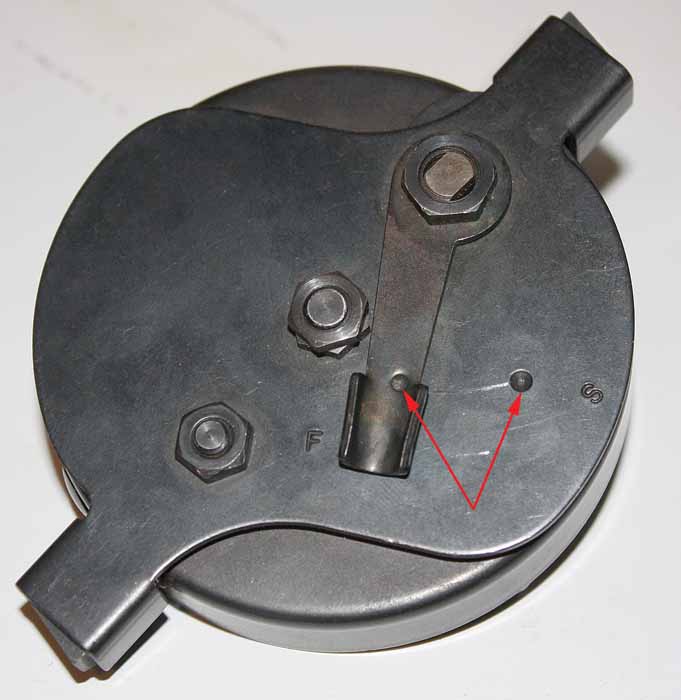
The base kit we tested is compatible with the Atchisson/Ciener style drop in conversion kits and dedicated uppers. It also fits the Kel-Tec, SIG 522, the Tactical Solutions uppers, the Model 1 Sales, and the Spikes kits and uppers. An adapter is also available (or a different dedicated magazine) for use with the new Smith & Wesson M&P 15 .22 LR rifles.
The initial impression of the new drum received high marks as soon as it was removed from the box. Although lightweight, it is very solid and well constructed. Two interesting and desirable features of the drum are the internal winder and the integral flexible follower. Since the ammunition must transition from the drum, up into the mag-well, it needs a long follower. Since it is at the rear of the ammo stack it must be able to rotate the outer circumference of the drum and their design fits the bill in all aspects.
The winder (rotor) is an internal part in the rear of the drum. It has evenly spaced finger grooves allowing the owner to relieve the spring tension with ease to make loading fast and painless without giving up the heavy force necessary for a reliable feeding procedure.
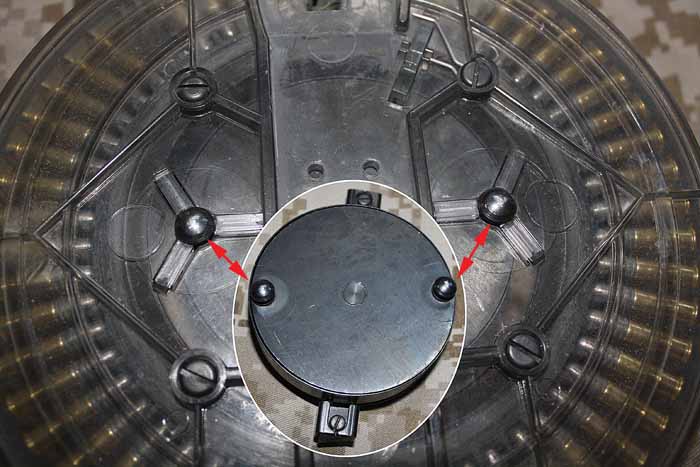
Range Time
When we arrived at the range and unloaded the day’s work projects, it was unanimous that the first subject would be the A&D Adapter. We opened the box and started assembling things without looking at the directions. This is usually attempted for numerous reasons and none are the common “guys don’t read directions” excuse. Well, maybe a little bit.
It’s always a useful test to see if seasoned “gun people” can assemble and use a new accessory simply by using logic and an intimate knowledge of the system they are testing. When coming to a stumbling block it helps to explain to others what needs the most attention and where to focus the directions. After a few minutes of examining the adapter and the drum everything was very obvious. The adapter can only fit one way and alignment pins that coincide with existing holes in the drum make alignment a sure thing. After assembling to the point where the shooters believed everything was correct, the directions were read and used as a confirmation to avoid mistakes or unseen warnings. All had been thought through correctly and that is a plus for the creators of the A&D Adapter. When something has been designed so it can be used on logic alone, with no special directions or a 3rd hand necessary to utilize, it shows a good execution in the design phase.
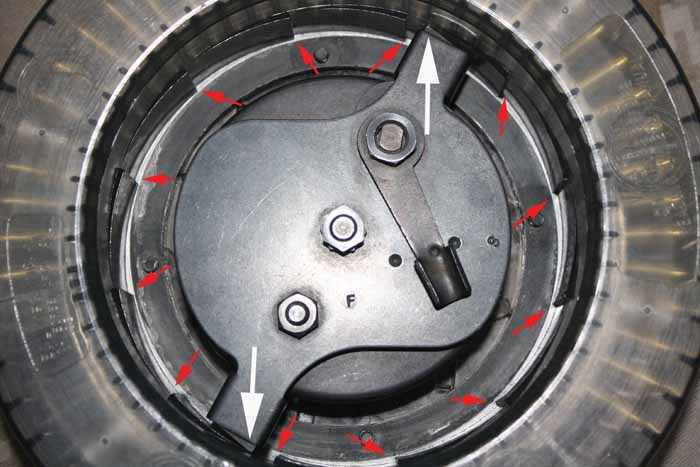
After a few minutes where all who were unfamiliar with the original American-180 got a quick lesson on loading the drums, the testing commenced without any issues at all.
It is no secret that an American-180 drum is time consuming to load and the loading time is far longer than the amount of shooting time it presents.
Two examples of drums were used during range testing: an original 177-round steel drum and a 275-round Lexan drum from E&L Enterprises. The first gun tested was the M16. Since it had such a short barrel it was awkward to hold the rifle in a comfortable position. While the drum hangs down only approximately 3.5 inches below the mag-well, it sticks out to the front almost 4.5 inches from the front of the mag-well in a manor where it obstructs the hand-guard a significant amount if it’s a carbine length forend. The comfort issue was quickly and easily solved by using a front grip in either the 3 o’clock or 9 o’clock position of the rail, depending upon whether the shooter was right-handed or left-handed. With a longer forend it is less of an issue due to the increased area for hand placement. The shooter does have to be conscious of this though because due to the design of the drum, the outside actually spins during feeding and any contact with it will increase the likelihood of a malfunction.
The second rifle tested was the G3. The adapters are very similar with the difference being the outside diameter of the new mag-well adapter and locking mechanism. The G3 was a full size model and there was plenty of room on the handguard for a comfortable grip without obstructing the drum.
Both models ran great. The G3 was particularly fun, possibly due to the heavier platform and unusually light (almost nonexistent) recoil. While .22 LR sub-caliber adapters are quite common for the M16 family of firearms they are much less encountered for the HK91/G3. The cyclic rate on both guns was smooth and not choppy. It wasn’t noticeably different from other .22 LR magazines. We didn’t bother to compare the rate of fire as it was almost identical if not exactly the same. The manufacturer’s suggested ammo to use with these drum/adapter combos is Mini-Mag Solids. We used Federal Gold Medal ammo with great results in ours.
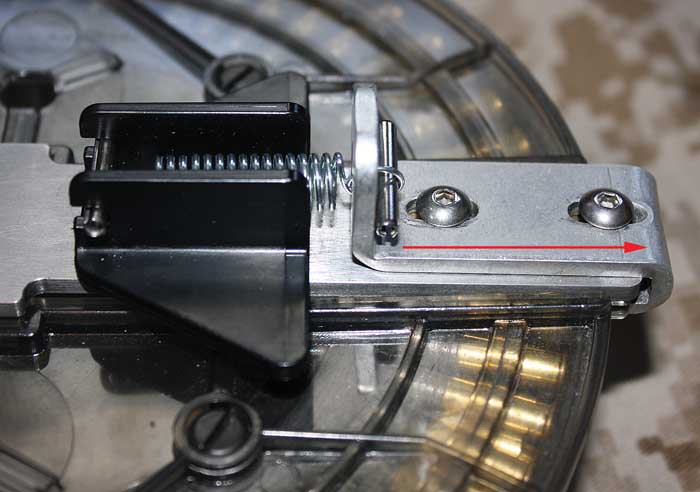
165-round, 220-round and 275-round drums are available from E&L Manufacturing and may be less expensive than some will imagine. The posted prices on the E&L website list them at $75, $100 and $125 respectively. If you are new to the American 180 system, a winder is necessary to give the drums the spring tension they need to feed. A single winder can be used with multiple drums and the cost is $75.
With a suggested retail of $279 for either adapter (plus the cost of necessary magazines) it is close to the price of a single case of ammo to get started. After that, the shooting should be much lighter on the wallet, the ears and the shoulder. We had a great time testing these.
The Black Dog Machine, LLC drum was the next subject on this range session. Just like the first test, the shooters dug in and started examining and loading without a peek at the directions. After some handling and a short rap session, it was loaded with absolutely no problems. The directions were then used to confirm everything and everyone was correct in their “educated guess” phase. This drum is so self explanatory that aside from some maintenance and disassembly instructions, we feel it could be shipped with no owners manual and the receiver would have no question of the proper loading and firing procedure.
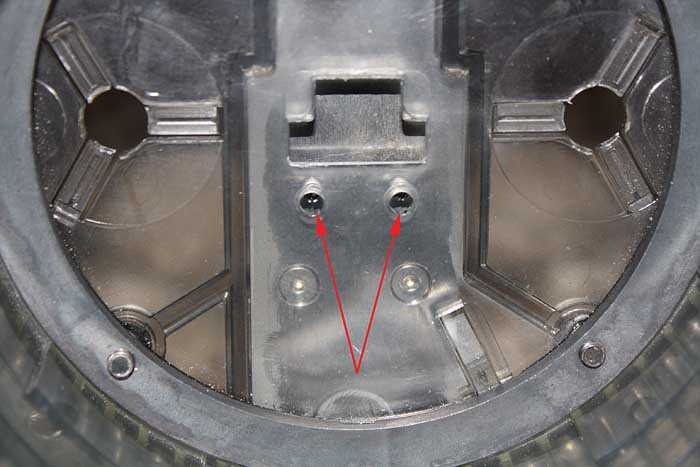
To load the drum, the internal winder is slowly advanced by the shooter using the finger grooves to keep the pressure light and continue loading ammo while advancing the flexible follower all the way to the rear. That’s it. Load, insert, shoot and smile.
The price of the standard AR-15/M16 .22 LR drum is $80. The conversion mag-well for use in the S&W gun is $90 or an adapter kit can be purchased for $34.
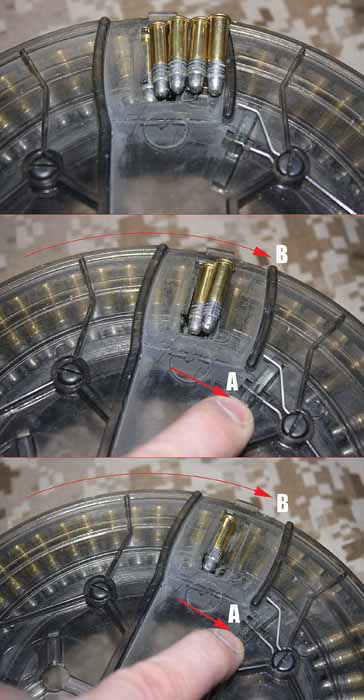
Summary
Both the Bazooka Brothers Drum Adapters and the Black Dog Machine, LLC Drum functioned exactly as advertised. They were a breeze to load and use and they functioned great. That being said we would be doing a disservice to our readers if we didn’t mention the following. With a few decades of time on the .22 LR sub-caliber kits in the M16 and G3 there is a small elephant in the room that has to be discussed and this is the overall performance and what is to be expected.
The .22 LR is an extremely dirty and inconsistent round that varies greatly by manufacturer. We have seen a huge variance in the reliability of some of these kits. Some companies have designed springs that ease the tensions to assist the small amount of residual energy in the .22 LR cartridge and help them function easier. Others have even crafted modifications to the units to enhance performance. What this writer has found is that faithful cleaning, lubricating and maybe most importantly, finding the right ammo has solved almost every reliability concern encountered. It is not uncommon for two or three identical kits on a single firing line, all running great but with different types of ammo. A little research, and LOTS of test firing can usually uncover a combination that makes your particular kit run great. That being said, these new high-capacity feeding devices will not change the performance of your individual kit.
We have found that a kit that runs great with the standard magazines will also run great with these new devices. If the kit is already finicky with the ammo and maintenance being employed, it may remain finicky with these or any other feed devices. If you spend some time to “fine tune” your system we think these new accessories will only enhance the pleasure of your shooting experience. Both of these accessories will eventually find their place in this writer’s collection to help eat even more rimfire ammo than normal. Since these run so well in our test guns, maybe this isn’t going to be as much of a money saving mission as originally thought, but another step in the “bigger is better” mentality exercised regularly in our community. Either way they both get a great grade.
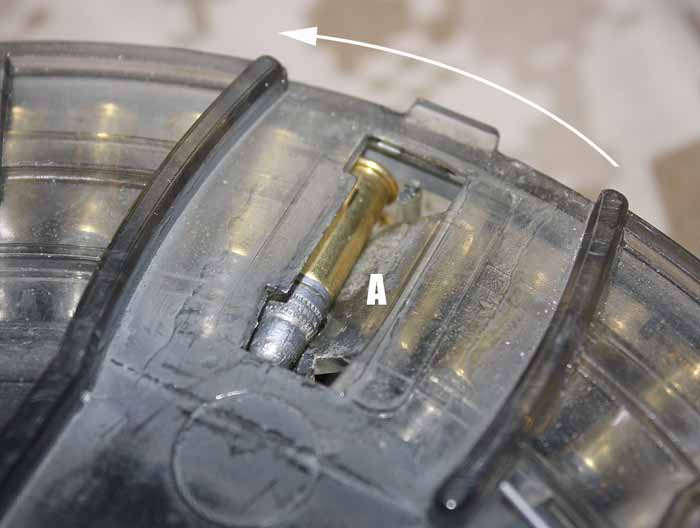
Sources
A&D Drum Adapters
Bazooka Brothers Mfg.
(765) 434-7709
www.bazookabrothers.comBR>
BDM 50-round Drum
Black Dog Machine
22843 Buskirk Dr.
Middleton, ID 83644
(208) 585-6581
www.blackdogmachinellc.netBR>
American 180 Drums & Acc.
E&L Manufacturing
4177 Riddle By-Pass Road,
Riddle, Oregon 97469
Phone: (541) 874-2137
FAX (541) 874-3107
www.brasscatchers.com
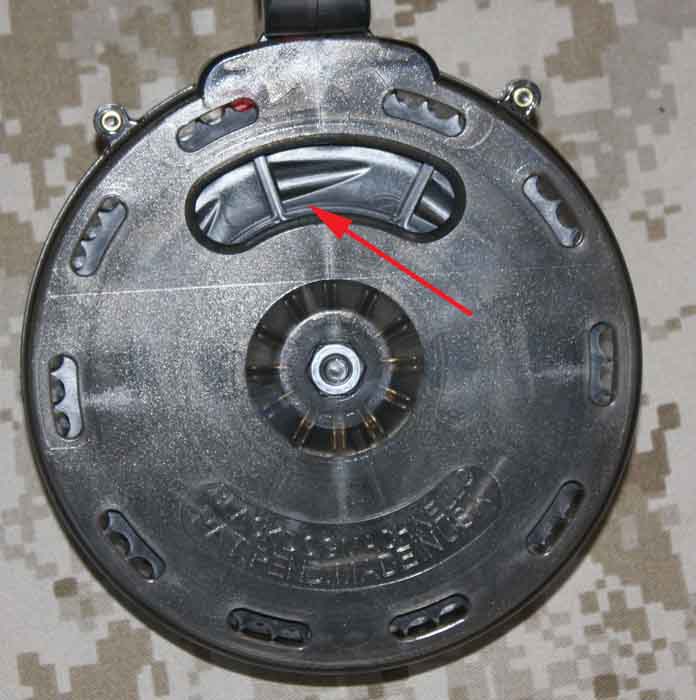
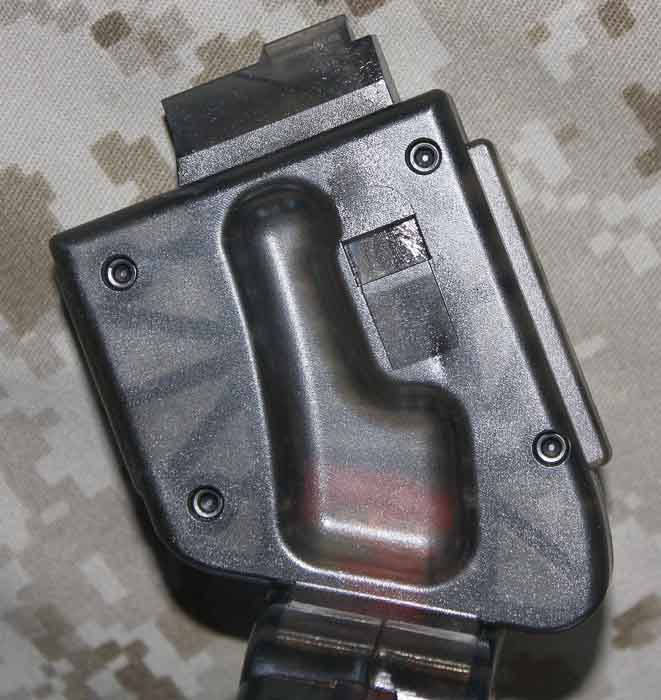
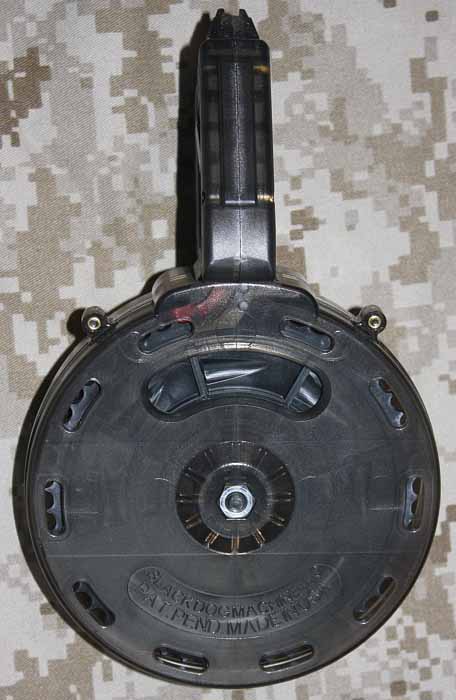
| This article first appeared in Small Arms Review V13N8 (May 2010) |












